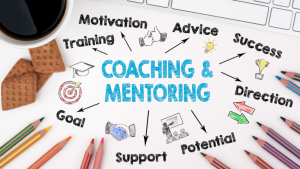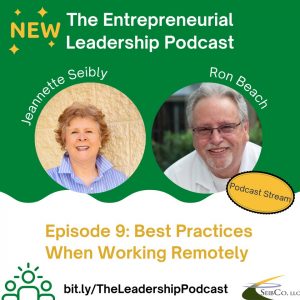
Traditionally, resilience was about being mentally tough, stoic, and silent about your true feelings. In other words, don’t say anything and hide your reactions.
The American Psychological Association defines resilience: Resilience is the process and outcome of successfully adapting to difficult or challenging life experiences, especially through mental, emotional, and behavioral flexibility and adjustment to external and internal demands.
I’m amazed by the number of younger employees who hate their jobs and say, “I’d rather be unemployed.” They jump from one position to another and are often surprised that there is no relief. Many older employees may not love their job responsibilities either. But they have developed a healthy resilience to adapt and become flexible to their jobs’ typical external and internal demands.
This is resilience today! Leaders need to acknowledge their feelings or emotions when triggered and not let them run the show! And, while it is healthy to express yourself, verbal dumping doesn’t work and only creates resentment, not resilience.
Resilience requires taking responsibility and addressing your reactions in a positive manner with your team. Doing so allows for new ideas, resolutions, and solutions to appear.
7 Tips to Create Resilience
Breathe. When you notice you are triggered, breathe in for 5 counts. Pause. Exhale for 5 counts. (Or any number that works for you.) Repeat this breathing pattern 3 times. Breathing reduces the fight, flight or freeze stress response triggered in your brain. Breathing also allows you to take responsibility for your reactions (aka triggers) and is critical before attempting to resolve any issue.
Self-Care. Self-care is essential today for leaders to strengthen their resilience. There are many changes occurring in jobs and workplaces where you have no control over the impact (e.g., loss of employment, work responsibilities, etc.). If you’ve experienced a loss (family member, pet, job, finances, etc.), take the time to grieve. Remember, you do have a choice in your reaction and the attitude you choose.
Get to the Heart or Core of the Problem. Conflicts between you and your team, or between team members, need immediate resolution. This requires a commitment and resilience to work through the apprehension and fear that often stop you and others from achieving the intended results.
Be Responsible for Your Communication Style (most people aren’t)! As a leader, take responsibility. It strengthens resilience. When you are responsible for how you communicate, you show others they can trust you.
Examples:
- Apologize and stop using words or terminology that others don’t understand.
- Ask team members questions when they present new ideas and be curious.
- Remember, when presenting a new solution you’ve been thinking about, it’s the first time they’ve heard it.
- Keep in mind that people learn at different rates of speed. So take it slow to ensure everyone is on the same page.
Have Reality-Based Conversations. Team members may hold onto upsets, exaggerate them, and use them to justify their poor job performance. Resilience and straight talk with compassion require having tough conversations. Before these conversations, get the facts. Then, talk with your executive coach, boss, or human resources to clarify how to create a positive outcome.
Learn How to Forgive, Even When You Don’t Believe You Should. As a leader, you will have arrows aimed at you when team members feel frustrated or upset. But resilience is vital. While this is easier said than done, forgive those that gossip about, criticize, or blame you. Remember, forgiveness is for you. Remember, don’t say, “I forgive you,” to the offender. This often only worsens the situation since they believe there is nothing to be forgiven for.
Hire the Right Coach. When you’re resilient, you can expand your point of view and step up as a leader. If sticky situations or political relationships are not going well, immediately talk with your executive coach to strengthen your resilience. Listen and learn. You can make things worse and sideline your career if you attempt to do it alone. The same mindset or lack of awareness that created the problem will not resolve it!
©Jeannette Seibly 2020 -2023 All Right Reserved
 Jeannette Seibly is The Leadership Results Coach. With over 30 years as an award-winning international executive coach, speaker, and business author, Jeannette’s clients effectively work through sticky situations and challenging relationships to become positive influencers. Contact Jeannette for a confidential discussion. PS: She’s also a three-time Amazon Best-Selling Author!
Jeannette Seibly is The Leadership Results Coach. With over 30 years as an award-winning international executive coach, speaker, and business author, Jeannette’s clients effectively work through sticky situations and challenging relationships to become positive influencers. Contact Jeannette for a confidential discussion. PS: She’s also a three-time Amazon Best-Selling Author!
A note from Jeannette about strengthening your resilience: Being aware of your feelings and emotions is essential. When you verbally dump on others, it’s damaging and demonstrates a lack of resilience on your part. Contact me for a confidential conversation to strengthen your resilience.
Consider: Strengthening resilience takes time and the experience of successfully working through challenges. I have extensive experience guiding leaders (current and future) to achieve unprecedented results. Contact me if you want an in-depth, one-on-one hour over 13 weeks. Remember, coaching speeds up your ability to excel, starting with strengthening your resilience.
 Have you met a challenge you’ve not been able to work through? Many managers and directors have, and their bosses may not be of much help. Now’s the time to develop your resilience and ability to achieve intended results! Waiting will not make a positive difference. Take action and contact me for a confidential conversation.
Have you met a challenge you’ve not been able to work through? Many managers and directors have, and their bosses may not be of much help. Now’s the time to develop your resilience and ability to achieve intended results! Waiting will not make a positive difference. Take action and contact me for a confidential conversation.


 Jeannette Seibly is The Leadership Results Coach. With over 30 years as an award-winning international executive coach, speaker, and business author, Jeannette’s clients effectively work through sticky situations and challenging relationships to become positive influencers. Contact Jeannette for a confidential discussion. PS: She’s also a three-time Amazon Best-Selling Author!
Jeannette Seibly is The Leadership Results Coach. With over 30 years as an award-winning international executive coach, speaker, and business author, Jeannette’s clients effectively work through sticky situations and challenging relationships to become positive influencers. Contact Jeannette for a confidential discussion. PS: She’s also a three-time Amazon Best-Selling Author! How’s your leadership development progressing? Are you moving forward … or a tad stuck? Do you need a “nudge” or “kick-in-the-butt?” Want to accelerate and soar your results?
How’s your leadership development progressing? Are you moving forward … or a tad stuck? Do you need a “nudge” or “kick-in-the-butt?” Want to accelerate and soar your results? 
 How’s your leadership development progressing? Are you moving forward … or a tad stuck? Do you need a “nudge” or “kick-in-the-butt?” Want to accelerate and soar your results?
How’s your leadership development progressing? Are you moving forward … or a tad stuck? Do you need a “nudge” or “kick-in-the-butt?” Want to accelerate and soar your results? 
 Your managers need your help! They are being held accountable for results and people, and many don’t have the skills to do it well! Therefore, they fail to achieve the intended results! It’s time to provide an
Your managers need your help! They are being held accountable for results and people, and many don’t have the skills to do it well! Therefore, they fail to achieve the intended results! It’s time to provide an 
 How’s your leadership development progressing? Are you moving forward … or a tad stuck? Do you need a “nudge” and “clarification?” Want to accelerate and soar your results?
How’s your leadership development progressing? Are you moving forward … or a tad stuck? Do you need a “nudge” and “clarification?” Want to accelerate and soar your results? 
 Announcing New Workshop! Traditional leadership (e.g., formal, metrics-driven) is being replaced with human leadership (e.g., focus on the human dynamics that impact results). For example, “That’s how it’s always been done.” vs. “Great idea. How do you recommend we implement it?” However, your managers and directors are being overlooked regarding the training required to be an effective boss and leader. Read about my newest workshop:
Announcing New Workshop! Traditional leadership (e.g., formal, metrics-driven) is being replaced with human leadership (e.g., focus on the human dynamics that impact results). For example, “That’s how it’s always been done.” vs. “Great idea. How do you recommend we implement it?” However, your managers and directors are being overlooked regarding the training required to be an effective boss and leader. Read about my newest workshop: 
 This week’s PODCAST: Listen to How to Be an Effective Advocate and Be Heard with my guest, Jill Tietjen, on
This week’s PODCAST: Listen to How to Be an Effective Advocate and Be Heard with my guest, Jill Tietjen, on 
 This week’s PODCAST: Listen to “Best Practices When Working Remotely” with my guest, Ronald Beach, Ph.D., on
This week’s PODCAST: Listen to “Best Practices When Working Remotely” with my guest, Ronald Beach, Ph.D., on 
 This week’s PODCAST: Listen to Grow your side hustle into a full-time job with my guest, Bobby Crew on
This week’s PODCAST: Listen to Grow your side hustle into a full-time job with my guest, Bobby Crew on 
 This week’s PODCAST: Listen to the Mastering Communication Skills with my guest, Meredith Bell, on
This week’s PODCAST: Listen to the Mastering Communication Skills with my guest, Meredith Bell, on